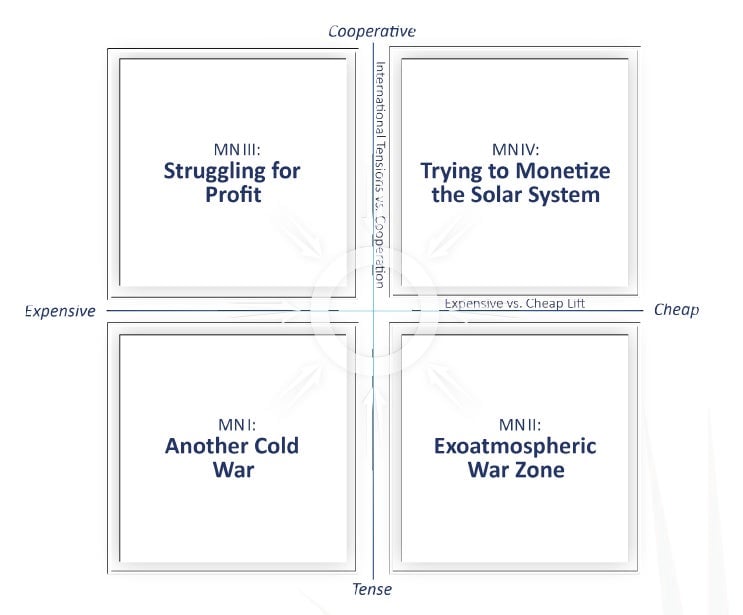Why “exoatmospheric war zone” is part of the outlook for space companies
SpaceX claims it is making great progress toward a reusable rocket, while Russia and the US are playing a tit-for-tat game of space sanctions, refusing each other rocket engines and satellite tracking stations. Together, this is a recipe for space war, at least according to the geo-strategic consulting firm Wikistrat.


SpaceX claims it is making great progress toward a reusable rocket, while Russia and the US are playing a tit-for-tat game of space sanctions, refusing each other rocket engines and satellite tracking stations. Together, this is a recipe for space war, at least according to the geo-strategic consulting firm Wikistrat.
In a new report released today, the firm revealed its efforts to forecast the future of the private space industry with a two-week simulation created by 75 analysts and led by Dr. Bruce Wald, the former director of the US Navy’s space research program. Wikistrat uses an online platform to conduct crowd-sourced strategic analysis for corporate and government clients, including NATO.
The simulation identified two overriding trends that will determine the future of the private sector outside of earth: The level of international tension, which will determine the types of activities occurring outside of earth’s atmosphere, and the cost of putting stuff in space, which will determine how much of it is done. Based on that rubric, the simulation found four possible scenarios for the latter half of the 21st century:

Recent events seem to be trending toward the unfortunate bottom right box: Essentially, if spaceflight is cheap enough and tensions are high enough, conflicts will spread above the earth, though the report does rule out the moon as “not a useful base for projecting power against earth.” Sorry, super villains.
But don’t fret too much, or let visions of space colonies fill your mind. The kind of cheapness that would make for either a space war or a rosier entrepreneur-driven race to turn our galactic neighborhood into a boom-town depends on technology that may be never be built. To lower the cost of accessing space enough for such massive activity, something like the space elevator—essentially, a cable thousands of kilometers long hoisting cargo from the earth to orbit—would need to be created. And while Google reportedly considered embarking on the project and elevator advocates claim one could be built by 2060 (pdf) with the proper breakthroughs, the fact is that engineers don’t yet have materials strong enough to actually build such a massive project and may never develop them.
Hence, the report notes that space activity in 2050 may be the same as it is today. Which, while not good news for the burgeoning private space industry, does leave it some opportunities—and, perhaps ironically, private companies may do better if global tensions stay high. Wikistrat’s analysis finds that governments will invest more in the private space industry in a high-tension scenario than in one where international relationships don’t drive prestigious scientific missions and military spending, leaving the companies struggling for returns.
You can already see this dynamic plumping SpaceX today: While the company’s litigation to block its competitor’s purchase of Russian rocket engines has failed for now, Russian authorities have decided to block the exports themselves, leaving SpaceX poised to expand its business with the US Air Force.